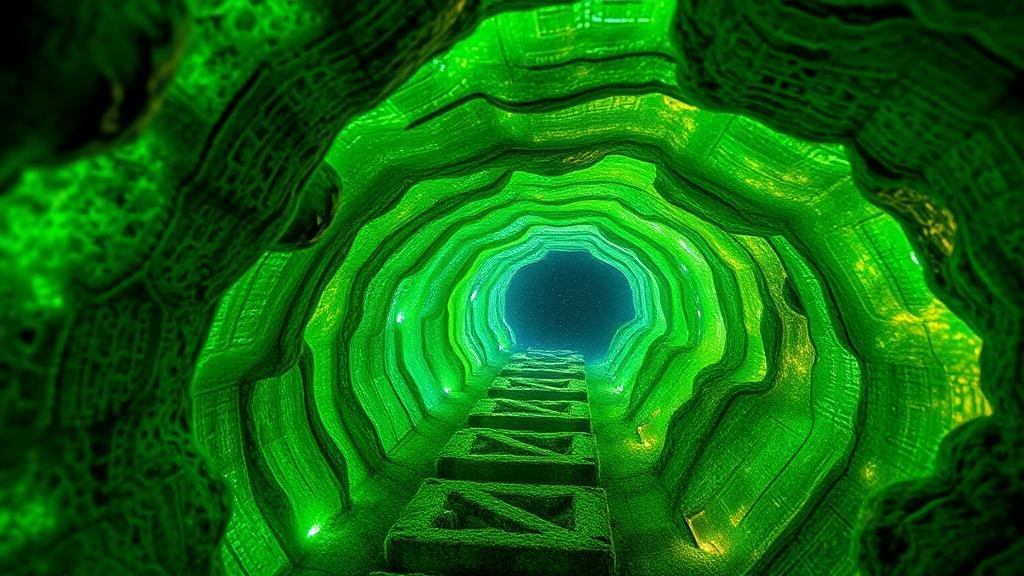Discovering tunnels filled with glowing flora said to be remnants of an ancient energy source.
Discovering Tunnels Filled with Glowing Flora: Remnants of an Ancient Energy Source
Throughout history, discoveries of hidden natural wonders have captivated our imagination. One of the most intriguing phenomena unearthed in recent years is the discovery of networks of tunnels filled with bioluminescent flora, believed to be remnants of an ancient energy source. This article delves into the specifics of these fascinating findings, exploring their locations, characteristics, and implications for our understanding of energy in ancient civilizations.
Overview of the Discovery
In 2022, an exploratory expedition in the Andes Mountains of Peru led researchers to uncover a series of underground tunnels adorned with glowing plants. e tunnels, estimated to be thousands of years old, contain a unique ecosystem that thrives in dark conditions, providing a stunning spectacle of luminosity. Initial analysis suggests these plants may have been nurtured by, or could even be remnants of, an ancient form of energy or sustenance utilized by early civilizations.
Scientific Characteristics of the Glowing Flora
The bioluminescent flora discovered in these tunnels exhibit several remarkable characteristics, making them a subject of great interest among botanists and ecologists:
- Bioluminescence: These plants produce light through biochemical reactions. Researchers theorize this adaptation may have evolved for attracting pollinators in the absence of sunlight.
- Diversity: Preliminary studies show a variety of species, including fungi resembling mycena and various luminescent algae. This suggests a complex ecosystem has developed over centuries.
- Chemical Analysis: Preliminary analyses indicate that certain compounds within these plants have energy-storing capabilities, potentially linking them to ancient energy practices.
Historical Context
The Andes region is home to rich indigenous cultures, most notably the Inca civilization. Historical records indicate that these cultures possessed advanced knowledge of natural energy sources. For example, they utilized terraces and irrigation systems powered by natural gradients and hydropower.
It is speculated that these tunnels could represent a form of ancient energy infrastructure, possibly harnessing geothermal energy or serving as storage for energy in the form of organic compounds found within the flora. linkage of these concepts provides a dazzling insight into the potential technologies of pre-Columbian societies.
Real-World Applications and Implications
The relevance of discovering these glowing tunnels extends beyond mere curiosity. Understanding how ancient societies harnessed natural resources can inspire contemporary approaches to sustainability.
- Biomimicry: Insights from these plants may lead to innovative designs in energy-efficient building materials inspired by bioluminescence.
- Ecological Research: These ecosystems highlight the importance of biodiversity and the potential for discoveries in pharmacology, given the unique properties of the flora.
- Renewable Energy: The interplay between energy sources and ancient practices can inform current renewable energy strategies, promoting integration with natural ecosystems.
Conservation Efforts
With such an invaluable discovery comes the responsibility to preserve it. Local and international organizations are collaborating to ensure the environmental conservation of these tunnels. Protecting such sites not only maintains biodiversity but also honors the cultural heritage of the indigenous peoples associated with these ancient practices.
Conclusion
The discovery of glowing flora in ancient tunnels represents an exciting intersection of history, science, and sustainability. As we strive to understand and learn from the past, these tunnels may hold keys to innovative energy solutions for the future. Continuing research and conservation efforts will be vital in preserving these natural wonders, allowing us to unlock further secrets of ancient civilizations while promoting ecosystems that benefit our planet.



